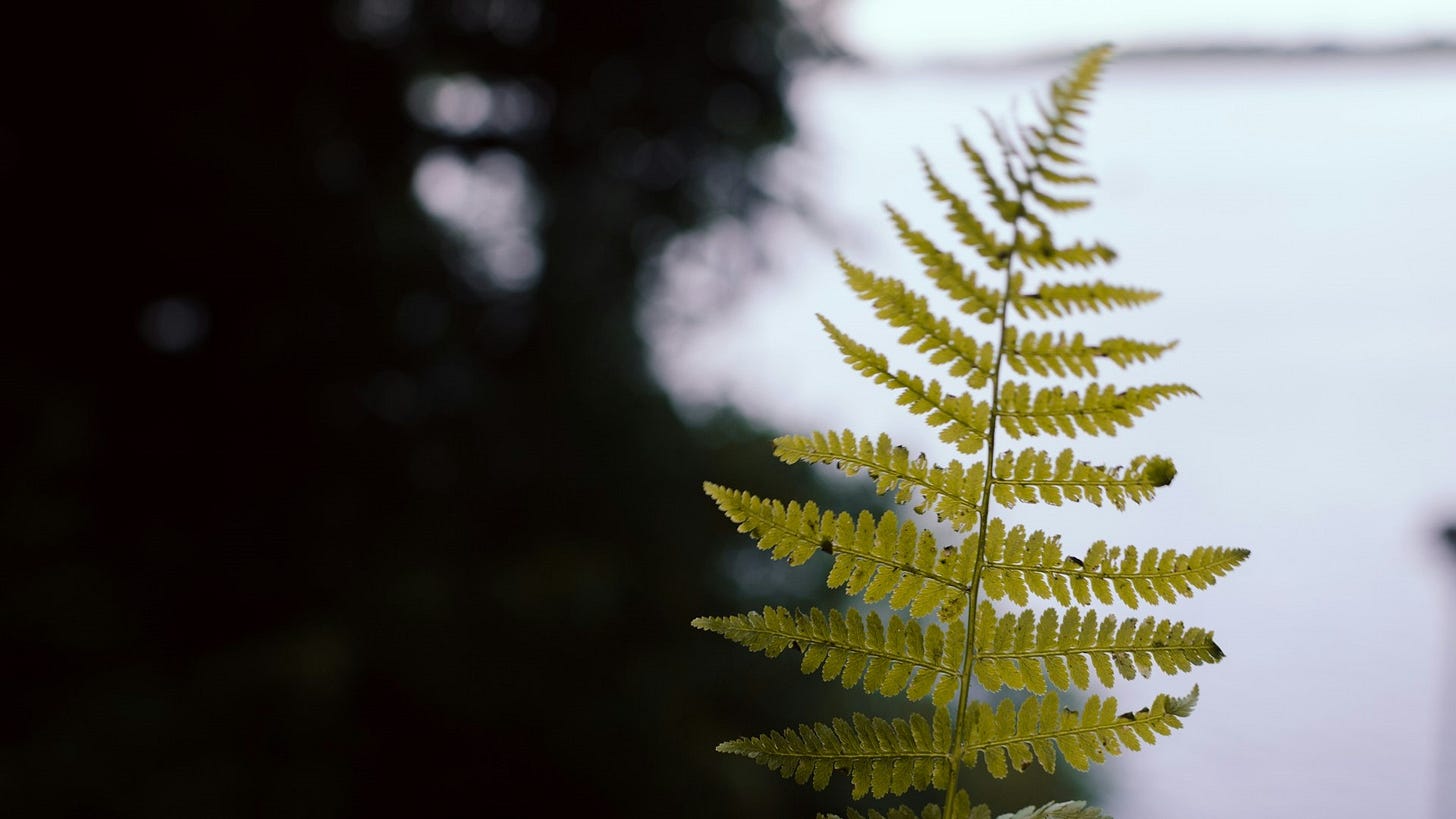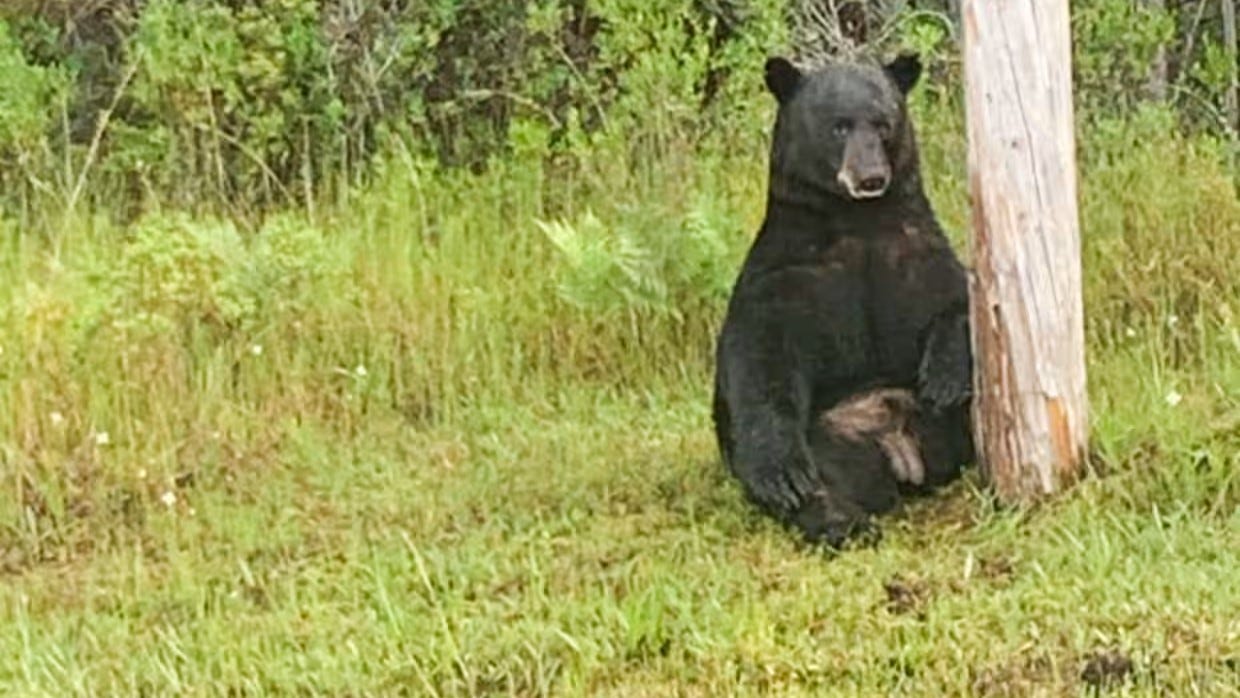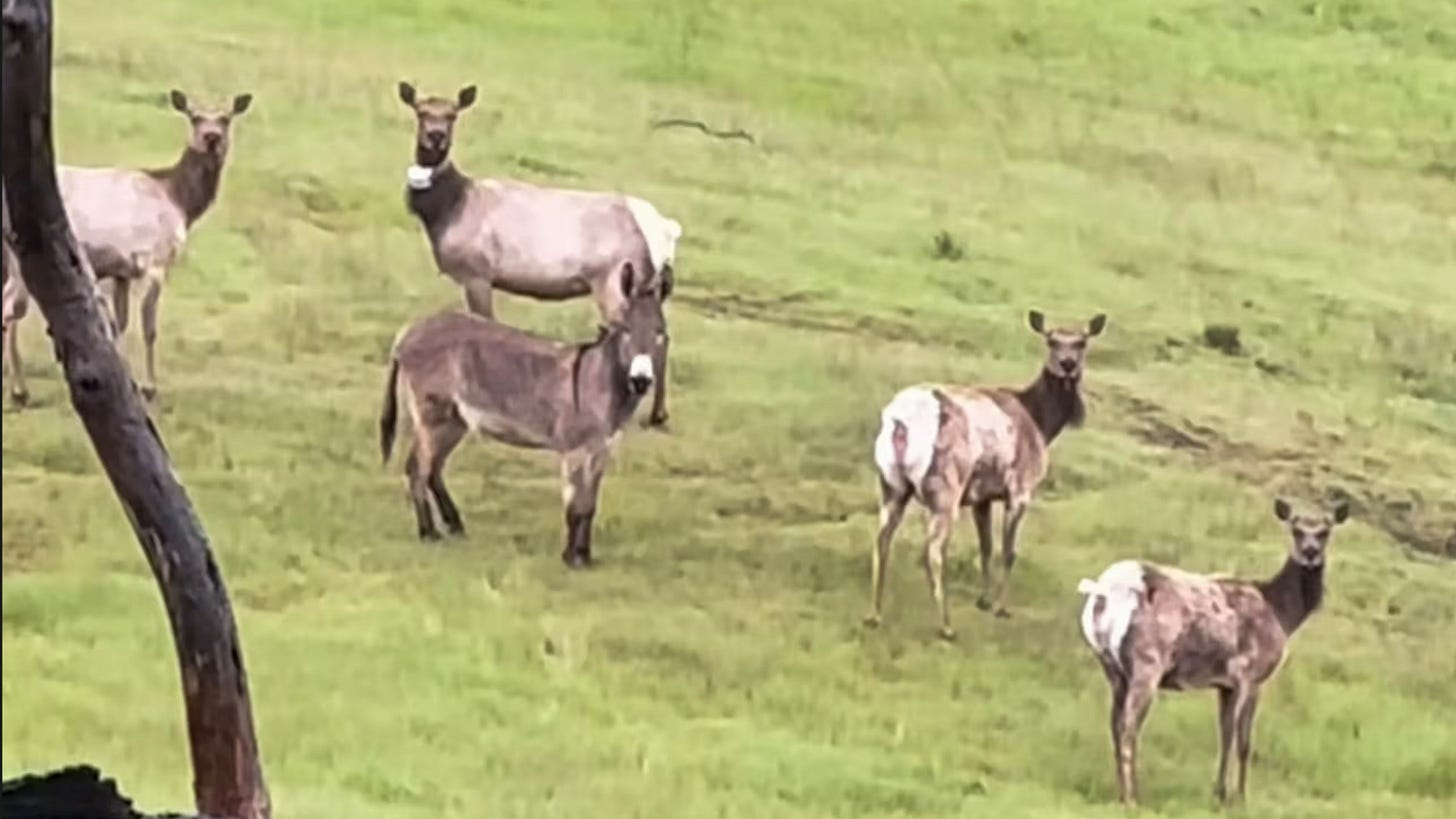Learning from all the “noticing beasts”
What can we learn from simply noticing – and being noticed by – the natural world?
Welcome to the third instalment of The Perpetual Beginner – please do share comments below, where you can also subscribe to the newsletter.
I recently read a story about police in Florida urging people to stop harassing a black bear that was spotted sitting morosely on the side of the road. The local sheriff’s office had reported “crowds of onlookers” trying to take selfies with the bear, who was “clearly not in the mood for pictures”, describing the large male bear as “stressed” and “depressed”.
By coincidence, later that day I stumbled across a David Attenborough documentary about hordes of onlookers on a much larger scale: safari-goers on the lookout for cheetahs in Africa. Experts recommend no more than five safari vehicles per sighting because in the chase for their prey, open grassland is needed if cheetahs are to stand any chance of success. In the clip shown, however, the camera pans out to reveal over 70 cars encircling the kill. As a result, more and more hunts fail, with the survival of cheetah cubs found to be greatly reduced in areas of high tourism.
Both stories speak to our impact on the natural world. Both speak, specifically, to the consequences of the human gaze when we don’t consider our actions within a wider context. As such, they point to something important about us as well as our impact on the world, since in these cases, we find ourselves fixated not so much on the wonders of nature per se as caught in an acquisitive gaze – focussed on getting that photo, that selfie, that experience.
So far, so familiar, perhaps. But how much do the “objects” of our gaze sense this estrangement on our part?
I suspect there are times when they do, and the title of this post is a reference to a line from Rainer Maria Rilke which stopped me dead in my tracks when I recently came across it for the first time.1 The full quote, written just over 100 years ago, reads:
“Even the noticing beasts are aware that we don’t feel very securely at home in this interpreted world”
Well before the age of mass tourism, then, let alone the age of selfies, Rilke was alive to what it meant to be lost in an “interpreted” world of our own making. That is, as I understand it, to be lost in a world of competing narratives, theories and ideologies that all purport to offer some kind of grasp on our situation but which in reality can lead us away from a secure sense of feeling at home on this Earth.
As in nature, though, where dock leaves grow next to stinging nettles, the antidote can sometimes be found next to the poison. If an acquisitive gaze, enmeshed within an interpreted world, gets to the heart of the problem, then maybe it’s another kind of looking that is central to the solution: one that is open and receptive, and slower to impose or project our judgments onto the world.
Perhaps what is needed, then, is to remain open to all we can see and hear, touch and feel in our natural surroundings, conscious of how quickly we can once again become trapped inside our heads.
A distinction I often make in my work as a mindfulness teacher, relevant here, is the difference between being in “conceptual” mode versus “perceptual” mode. For most of us, much of the time we’re operating in the first of these: using words and concepts to gather information, to exchange ideas with others, to solve problems and to tick off items on our “to do” lists. Even in a break between tasks, we may find ourselves lost in a stream of thoughts (the “inner monologue”) or the newsfeeds on our phones. The mind’s default setting is to grasp for more, and this keeps us in conceptual mode for long stretches at a time.2
But what’s it like to step back from this mode and tune in, instead, to what we can perceive around us, and to do this vis-à-vis the natural world in particular?
Reflections on “just looking” at the natural world
There are so many insights and inspirations that follow from this approach. Here, I offer just three points from my own experience…
#1. The wonders of the basic encounter
The starting point, for me, has to be the enigma of the encounter itself. Think about the creatures you’ve encountered over recent weeks or months. Perhaps it’s the intent stare of a cat patrolling the streets in your neighbourhood; the horse in the field that, upon seeing your approach, comes over to say hi; or simply the large bluebottle buzzing around your kitchen before abruptly taking his leave out the open window.
In each case, there’s something profoundly mysterious about the encounter itself – this being there face-to-face with another creature which is as alien to you as you are to it. However mundane or commonplace the encounter, it’s all the same true: no such experience can ever be repeated. By the same token, it can also never be reduced to something else (in contrast to the basic functioning of the “interpreted” world).
One reason for this evocation of wonder is the almost dialogue-like quality to such an encounter: the horse “coming over to say hi” is only semi-metaphorical. I’m reminded, here, of a famous Wittgenstein quote: “If a lion could speak, we would not understand him”. Wittgenstein’s point was really about human language: that linguistic understanding rests not just on an analysis of the words spoken but also on there being a shared life context between the interlocutors. Even if a lion were able to formulate words in English, he felt, the radically different forms of life – human vs lion – creates an unbridgeable gap. That may be, but when it comes to simply perceiving a lion or, more likely, a horse – when your gaze meets his – then this gap disappears.
I’ve focussed on direct encounters so far, but images of the natural world can also evoke this sense of wonder. For several years, I’ve had the privilege of working with Fauna & Flora, the global conservation organisation, and while my involvement is to teach mindfulness (and related tips and strategies for their working culture3), an added benefit is learning about some of the weird and wonderful species that Fauna & Flora actively protects.
One image that’s really stuck with me all summer is this one of the Union Island gecko – a tiny, breathtakingly beautiful lizard with colourful, jewel-like markings:

This tiny creature, sadly endangered due to poaching for the illegal pet trade, weighs less than a pinch of salt. According to Fauna & Flora, its minuscule size makes it vulnerable to desiccation and so to avoid drying out, it lives mainly in moist crevices or under logs and rocks. Besides this, very little else is known about this tiny multicoloured lizard; its lifeworld remains shrouded in mystery…
#2. Learning stillness
One of nature’s wonders is the range of tempos constantly at play – from the literal hive of activity of the summer’s bees to the perfect stillness of the heron keeping watch over the slightest perturbation below the water’s surface.
Being still is easy to say but hard to do, whether in body or in mind. Nature can be a wonderful source of inspiration in this respect. In Stillness Speaks, spiritual writer Eckhart Tolle advises as follows:
“Look at a tree, a flower, a plant. Let your awareness rest upon it. How still they are, how deeply rooted in ‘just being’. Allow nature to teach you stillness. When you look at a tree and perceive its stillness, you become still yourself.”
This advice may seem clichéd, or quaint, or naïve, even. But if you try it out for yourself – pausing and letting your awareness rest upon that familiar house plant or the foliage that you walk past each day – then I believe there’s much wisdom, not to mention a deep sense of connection, to be discovered through this approach.4

#3. Opening to possibilities
The final insight is about keeping an open mind – and a sense of hope.
In our human world, it’s easy to feel despondent regarding our collective (in)abilities to resolve the multiple, overlapping crises we currently face. It can feel like there are no workable options for a future that is remotely equitable or sustainable.
In that context, the mere existence of creatures and forms that we would never have imagined to be living alongside us – like the Union Island gecko – serves at least as a tiny reminder of the surprising possibilities that are out there when we stop and really look and listen. Another world is possible, these creatures seem to say.
Or the other image that’s really stayed with me all summer is that of “Diesel”, a wayward pet donkey now found to be living contentedly with a herd of wild elk. Back in 2019, the story goes, Diesel got spooked and took off during a hiking trip with his owners near Clear Lake, Northern California. Only in June this year was he spotted “living his best life” among a herd of elk just a few miles from where he first went missing:
Since first reading this story, I’ve found I keep coming back to it. I find myself wondering: what’s Diesel up to? How’s he doing, and how’s it going with the elk and their no doubt complex set of social relationships?
As with the bejewelled gecko, the image of Diesel and his new family reminds me of the surprising and unpredictable range of outcomes that can play out. Again, another world is possible, they seem to say – jolting me out of the limited views and self-referential loops of my mind’s “interpreted” world.
Beyond anthropocentrism
Through this simple orientation of just noticing, then, we open ourselves up to the wonders of the natural world and the lessons nature has in store for us, if we’re willing to receive them.
But there’s also a more philosophical point from all of this – about how we understand ourselves and our basic relationship vis-à-vis the natural world.
What I love most about the Rilke quote is that it quietly returns the source of noticing to the more-than-human world. Rather than claiming our capacity “to notice” as a quintessentially human endeavour, a truer account is that we find ourselves thrown into a world of noticing beasts that includes all the bears, and donkeys, and geckos, and everything else besides. Of course, the particular ways in which we notice things are intimately bound up with our very contingent human existence: how we see the world differs markedly from how a bear or a bluebottle sees it. But to notice at all – this is something which emerges out of, and ultimately returns to, nature.
Put differently: we’re always and everywhere embedded in the natural world, and our most primordial relationship to this world – noticing – emerges from it.
In a 2020 essay for Aeon, I summarised it like this. As perceiving beings, our basic existence finds us situated in a web of crisscrossing, overlapping perceptions. Through fleeting moments of eye contact, reciprocal gestures and sounds, and so on, the intertwining of our lives with other beings is revealed. Crucially, these include the lives not only of other humans but also of non-human creatures. In noticing “the staring eyes of cats [and] the raucous cries of birds who fly in patterns we have yet to decipher”, then (to quote David Abram), we receive perpetual reminders of our intertwinement with the natural world.
Perhaps openly noticing and being-noticed-by nature therefore holds the key to feeling securely at home in the only home we have: this Earth, and all the life forms we share it with. By the same token, noticing nature offers an ever-present escape from the “interpreted” worlds that we might otherwise lose ourselves in.
In recent times, these increasingly comprise the algorithmically-scaffolded online worlds which, by design, have us drift further and further apart both from each other and from a secure sense of feeling at home. (It’s common to talk about online “siloes” and “echo chambers”, but I think something less rounded and more grid-like – a giant warehouse divided into thousands of thick-walled rectangular cells – is more apt for the digital world. By contrast, reflecting on the rainforests, deserts and oceans, there is the adage that you never see a perfectly straight line in nature.)
Returning again and again to our perceptual back-and-forth with the breathing biosphere, then – this is our way back home. It doesn’t require stunning vistas or encounters with exotic birds and beasts. If our eyes are open, nature is all around us; and the greatest gift is that even “a patch of weeds in a vacant lot” can provide the spark of joy – to cite the poet Mary Oliver – if we’re open to receiving it.
Thanks to John Peacock who introduced me to this quote on a course run by Bodhi College in June (“Wonder and the Meaning of Being”).
For more, see page 104 of One Second Ahead by Rasmus Hougaard, Jacqueline Carter and Gillian Coutts.
This work is carried out with and through Potential Project. It is also made possible by the generosity of The Robert R. N. Ho Family Foundation. I am deeply and eternally grateful to both organisations.
If you’re UK-based and wish to explore this experientially, check out the silence and nature retreats at Sharpham House.




Thanks Dan! I really like the way you've summed up and connected some important ideas and observations. I would like to note that often, meaningful inter-species communication is quite possible, given that shared context you mention. Should we be open enough to noticing, that is.
Our spoken and written languages are capable of more nuance, but then, most of the time we use them to conceal truths, not reveal them. The most important things in life can usually be said with a snuggle (or its withholding), as a wise goat once said, with a snuggle.
I really liked your piece; the ideas and writing, and the stillness they provoked. I do not know if there is a more important mission than getting humans to chill the fuck out and just be, and I very much appreciate you quietly shouting this message from the rooftops
I really enjoyed this, Dan. I find your writing style itself very good at doing what you're often writing about—inviting me (or giving me no choice but) to slow down and reflect. It's nice being thrown out of the almost maximally mindless state of trying to clear my inbox and into the aperture-widening world of your Substack.